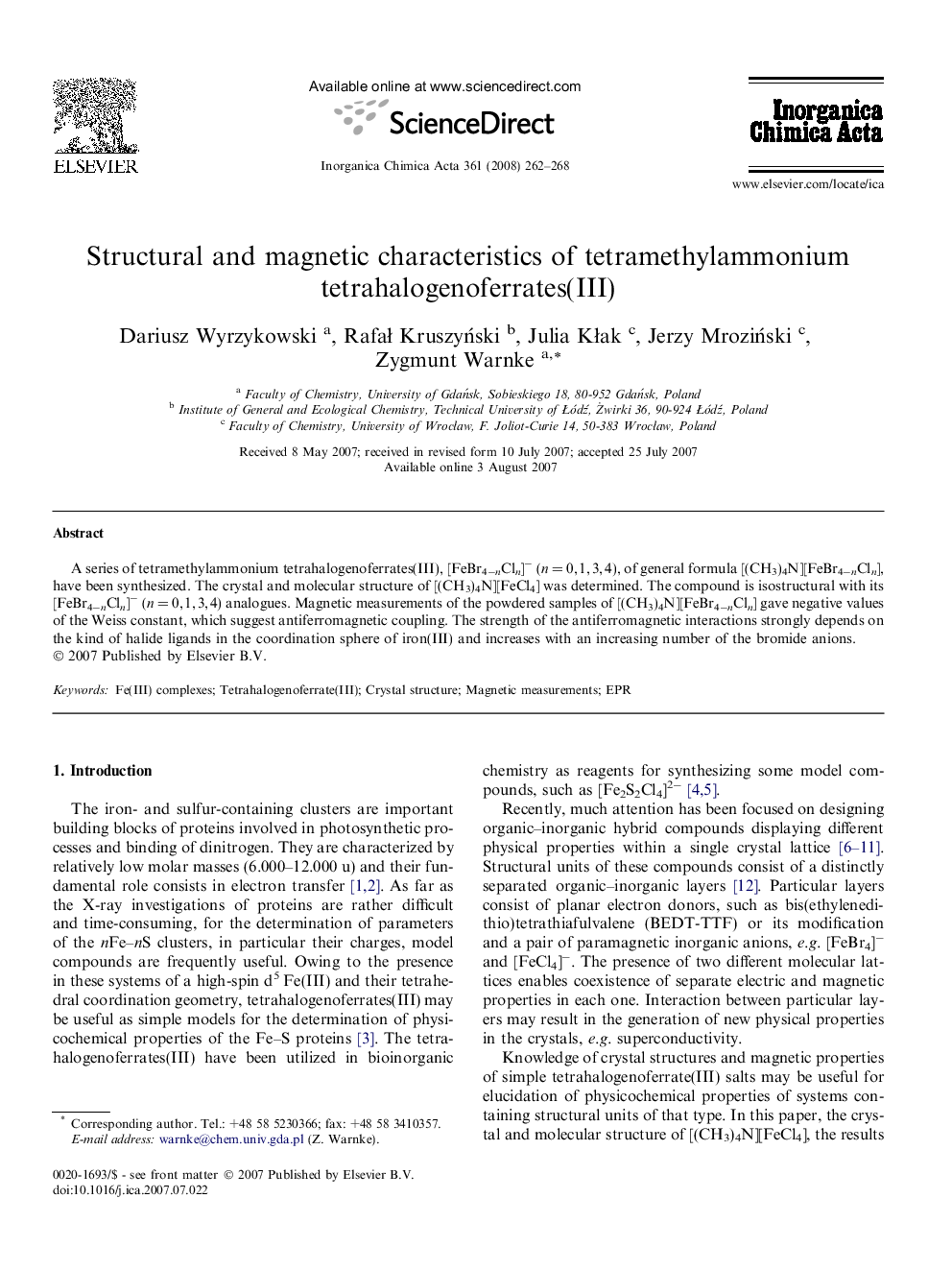| Article ID | Journal | Published Year | Pages | File Type |
|---|---|---|---|---|
| 1307591 | Inorganica Chimica Acta | 2008 | 7 Pages |
A series of tetramethylammonium tetrahalogenoferrates(III), [FeBr4−nCln]− (n = 0, 1, 3, 4), of general formula [(CH3)4N][FeBr4−nCln], have been synthesized. The crystal and molecular structures of [(CH3)4N][FeCl4] were determined. The compound is isostructural with its [FeBr4−nCln]− (n = 0, 1, 3, 4) analogues. Magnetic measurements of the powdered samples of [(CH3)4N][FeBr4−nCln] gave negative values of the Weiss constant, which suggest antiferromagnetic coupling. The strength of the antiferromagnetic interactions strongly depends on the kind of halide ligands in the coordination sphere of iron(III) and increases with an increasing number of the bromide anions.
Graphical abstractA series of tetramethylammonium tetrahalogenoferrates(III), [FeBr4−nCln]− (n = 0, 1, 3, 4), of general formula [(CH3)4N][FeBr4−nCln], have been synthesized. The crystal and molecular structure of [(CH3)4N][FeCl4] was determined. The compound is isostructural with its [FeBr4−nCln]− (n = 0, 1, 3, 4) analogues. Magnetic measurements of the powdered samples of [(CH3)4N][FeBr4−nCln] gave negative values of the Weiss constant, which suggest antiferromagnetic coupling. The strength of the antiferromagnetic interactions strongly depends on the kind of halide ligands in the coordination sphere of iron(III) and increases with an increasing number of the bromide anions.Figure optionsDownload full-size imageDownload as PowerPoint slide
